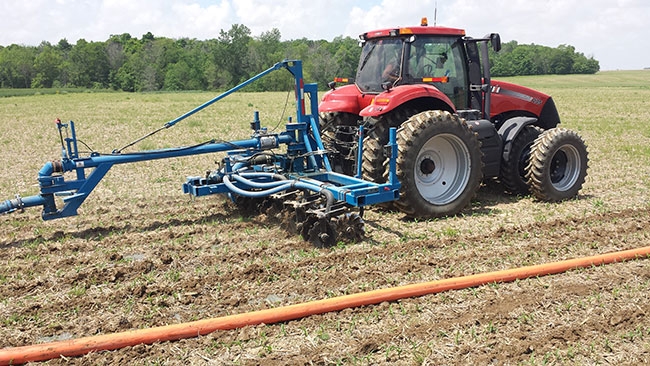
We live in a rural area in Ontario, with several farms surrounding us, including a hog farm just down the road. In early September, my six-year-old and I went for a bike ride when he noticed a tractor in the field dragging a long hose around. When I explained to him that the farmer was using the drag hose to apply manure, he immediately commented that it didn’t smell as bad as it usually does. The rest of our bike ride was spent guessing how long the hose actually was, and trying to catch a glimpse of the pump in action – a new fall memory in the books.
It’s often said that you never forget how to ride a bike after you’ve learned. When it comes to farming, and specifically manure management, certain skills stay with you even if you don’t use them regularly. Safety needs to be one of them.
By the time this issue hits your mailbox, your fall application may be complete, and you may be looking toward a winter application. No matter the season, safety on the farm, and especially near manure storage, needs to be of utmost importance. There’s no better time than now to do a safety check around your farm.
Here are some tips based on a fact sheet from PennState Extension:
- Keep your signage up to date, warning people of a potentially hazardous atmosphere, in order to help educate everyone on the farm or visiting the farm that hazards exist in a confined space.
- Have a written safety plan for hazardous spaces, giving details about potential hazards, why entry would have to be made, and what procedures to follow if entrance is necessary .
- Do not enter a hazardous space without at least two people at the site. One person should always remain outside of the space and be available to summon help if necessary.
- Test any potentially hazardous space for explosive gases and oxygen deficiency using a gas detection instrument that can test for oxygen, explosive gases and hydrogen sulfide.
- Before entering a potentially hazardous space, ventilate it to provide fresh air. Refer to manure pit safety standards and regulations to determine proper ventilation protocols.
- A body harness attached to a fall arrest and retrieval system is recommended for anyone entering a potentially hazardous area.
To better understand the safety risks surrounding manure handling and storage, be sure to read Tracey Erickson’s article on page 16. Erickson, a dairy field specialist with South Dakota State University Extension puts it best – if you think you’re at risk, you are. Stay safe.
